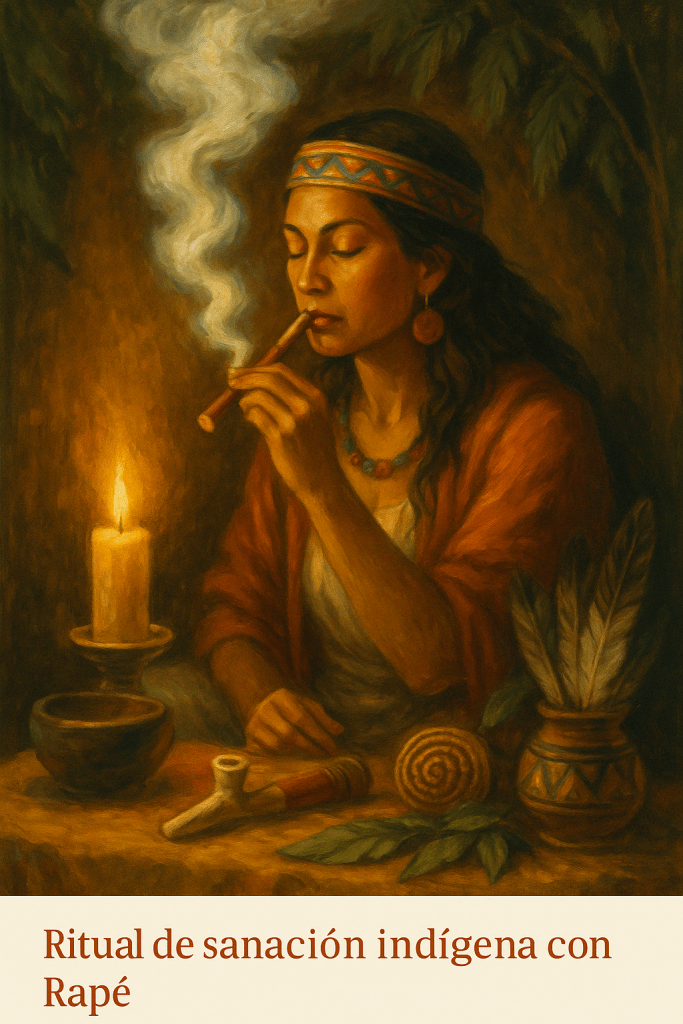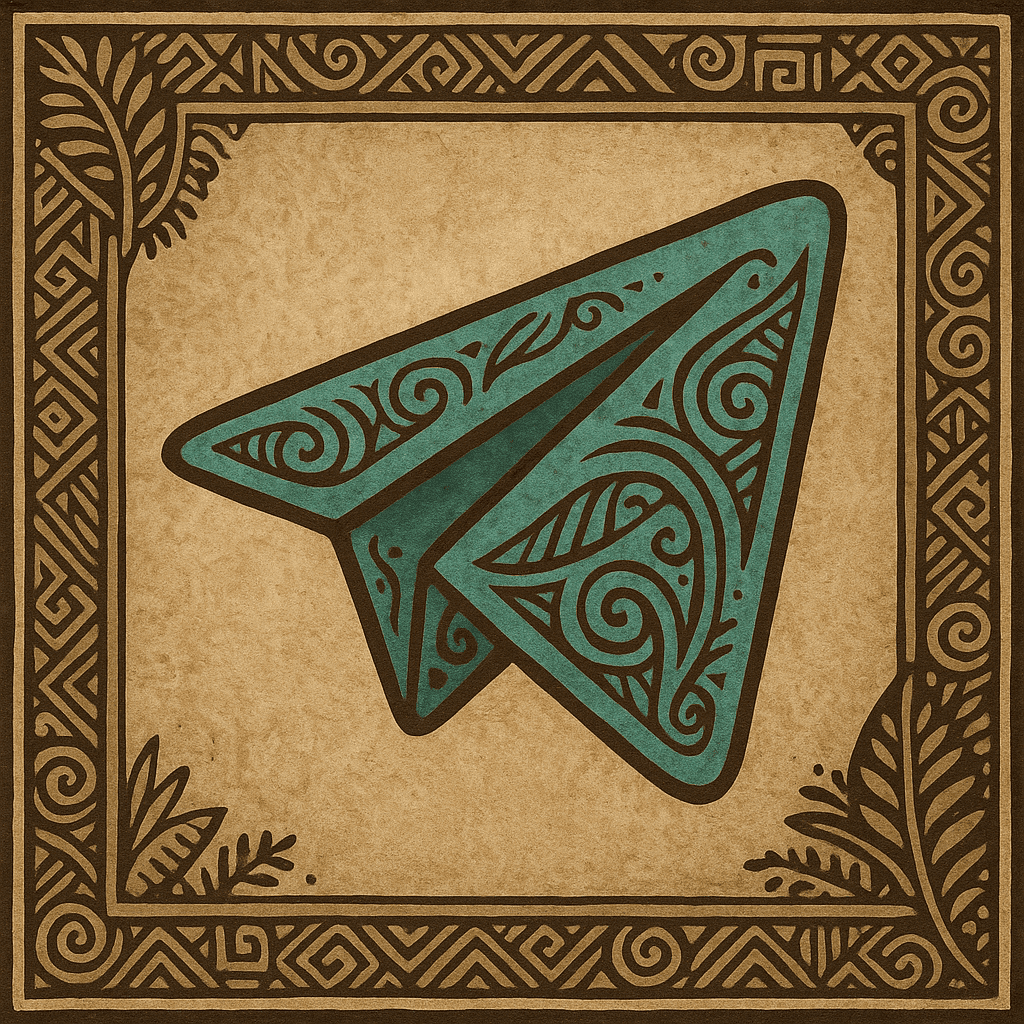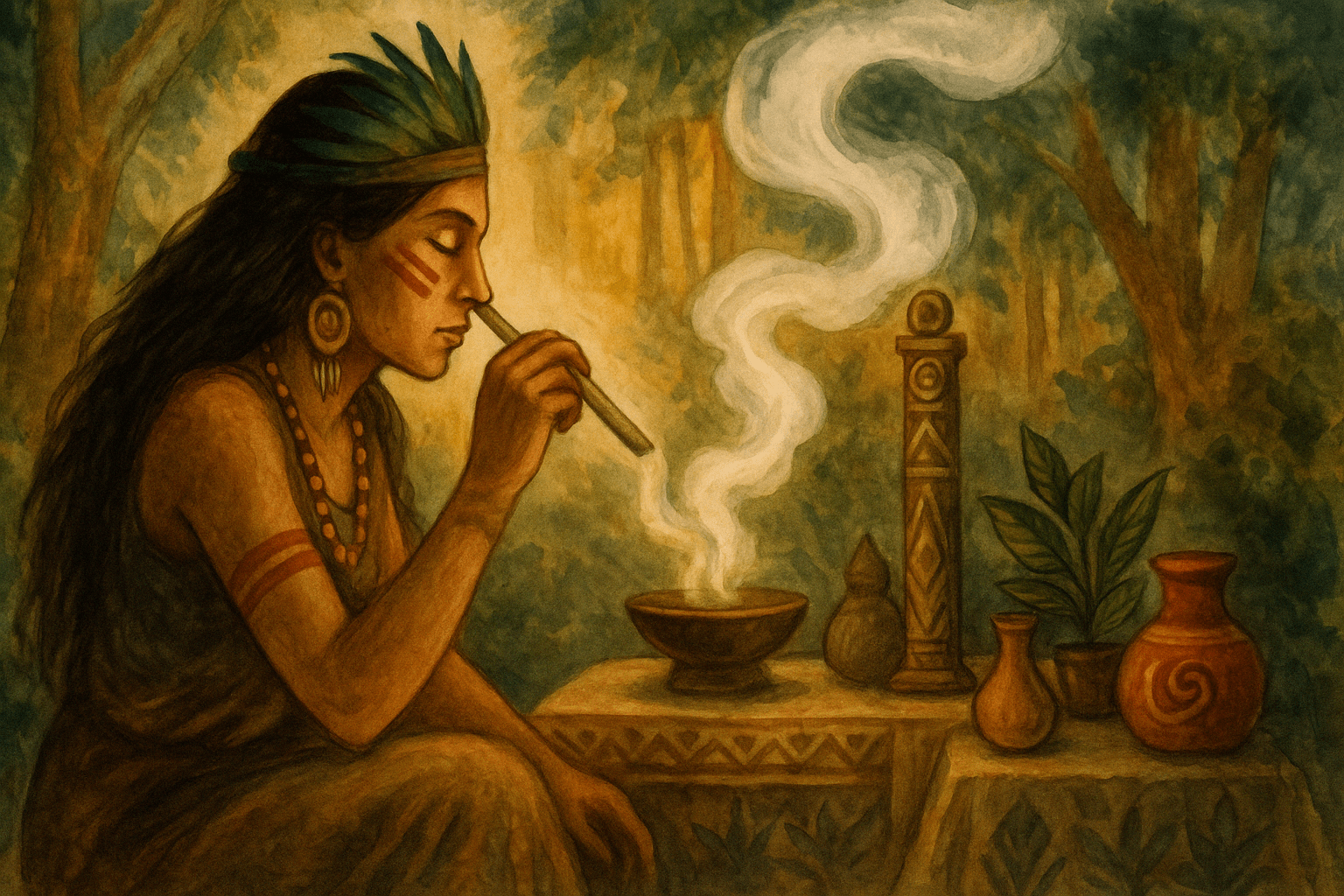Rapé as a ritual medicine
Indigenous origins of Rapé: tribes and traditions
Core elements of a traditional ritual
Three Indigenous Healing Rituals with Hapé (inspired by tradition)
How to create your own Rapé ritual at home
Frequently Asked Questions about ritual Rapé use
Indigenous healing rituals with Rapé are sacred acts that connect the body, spirit, and ancestral knowledge through breath, intention, and presence.
🌿 Rapé as a ritual medicine
Rapé is not just a sacred powder blown through the nose. For the Indigenous peoples of the Amazon, Rapé is a living medicine with its own spirit, used in rituals of healing, spiritual connection, protection, and vision.
Its use is deeply tied to moments of transition, introspection, or imbalance. Elders apply it with songs, prayers, and offerings—not as routine, but as a sacred act of dialogue between human beings and nature.
In this article, we’ll explore how indigenous healing rituals with Rapé can inspire you to create your own sacred connection to this medicine—not through appropriation, but with respect, humility, and gratitude.
🪶 Indigenous origins of Rapé: tribes and traditions

The ritual use of Rapé comes from a wide range of Amazonian tribes, including:
- Yawanawá (Brazil): known for strong, visionary Rapés connected to the jaguar and the power of song.
- Huni Kuin: associate Rapé with expanded consciousness, chakra alignment, and heart medicine.
- Katukina: use it to cleanse body and soul before major ceremonies like Nixi Pae (ayahuasca).
- Nukini, Kaxinawá, Apurinã, and others: each tribe has its own blend, plants, and spiritual intention.
In all cases, Rapé is not entertainment or “a spiritual experience”. It is medicine. A breath with purpose. A bridge to the spiritual world. A tool for purification and guidance.
💬 When you take Rapé, you step into an ancestral field of consciousness. Each blow echoes millennia of living wisdom.
🔥 Core elements of indigenous healing rituals
Indigenous healing rituals are not fixed formulas. They are living experiences shaped by tribe, intention, timing, and the person receiving the medicine. Still, there are essential elements present in most practices, and understanding them can help you honor the sacredness of this path.
1. Clear intention
Every ritual begins with intention. In Indigenous cultures, Rapé is never blown “just because.” It is used to release, ask, give thanks, purify, or seek vision. Words and thoughts carry power. Intention guides the medicine.
2. Opening the space
The ritual space is prepared with care. It may include:
- Lighting a candle or fire
- Burning sacred herbs or resins
- Offering to the elements (water, flowers, tobacco, ashes)
- Creating a circle or symbolic altar
The place becomes an energetic container—a sacred field where body, mind, and spirit realign.
3. Songs, prayers, or sacred silence
Many tribes sing to call in their spiritual allies. Rapé is blown to the rhythm of drum or voice. In others, deep silence is the path. What matters is full presence—a willingness to be with whatever arises.
4. Conscious application of Rapé
The blow is never rushed or forced. Whether it’s self-applied with a kuripé or served by another through a tepi, it begins with connection and prayer. The goal is not intensity, but authentic movement of the soul.
5. Integration and listening
After the blow, the ritual is not over. The silence is part of the medicine. There may be tears, visions, tremors, release, or stillness. Nothing is judged. The process unfolds until it feels complete.
💬 Indigenous healing rituals with Rapé do not impose—they invite. They do not push—they hold. They do not enlighten—they reveal what has always lived within you.
🌕 Three healing rituals with Rapé (inspired by tradition)
Here are three ritual frameworks inspired by real ancestral practices, adapted for modern settings. You can follow them as a guide to create your own sacred experience:
🌿 Join the Sacred Rapé Tribe

We’ve opened an intimate group on Telegram for souls who honor this medicine with respect and purpose. Share rituals, spiritual guidance, and sacred energy in community.
You just need to leave your email to receive access. 🌕 See you within the circle!
✨ 1. Deep energetic cleansing ritual
Best for: post-conflict, emotional exhaustion, or after closing a cycle.
Suggested elements:
- White candle + copal or palo santo
- Black stone or smoky quartz
- Grounding or cleansing Rapé
- Drum rhythm or silence
Flow:
- Speak your intention: “I release all that no longer belongs to me.”
- Blow into one nostril. Pause. Then the other.
- Sit in silence and visualize the smoke clearing layers of your field.
- To close, blow out strongly and say three times: “Thank you, thank you, thank you.”
🌀 2. Ritual for connecting with a spiritual guide or ancestor
Best for: moments of deep questioning, decisions, or meditation.
Suggested elements:
- Blue or violet candle
- Visionary Rapé (Yawanawá, Huni Kuin, or gentle Nukini)
- Symbol from your lineage or inner path
- Journal or sketchbook
Flow:
- Ask for guidance before blowing.
- Apply Rapé and sit for at least 15 minutes.
- Let images, emotions, or messages come.
- Write or draw everything you experienced.
💚 3. Emotional healing ritual (grief, guilt, forgiveness)
Best for: releasing emotional weight, forgiving others or yourself.
Suggested elements:
- Photo or name of the person involved
- Pink or green candle + water with salt
- Heart-opening or gentle cleansing Rapé
- Soft instrumental music or heartbeat drum
Flow:
- Create the altar and say: “I open this space to heal this emotion with love and truth.”
- Apply Rapé gently.
- Allow tears, speaking aloud, journaling, or just feeling.
- Close with one hand on your heart and one on the altar. Breathe.
🛖 How to create your own Rapé ritual at home
You don’t need to be part of an Indigenous community to create a ritual with Rapé—but it is essential to approach the process with respect, clear intention, and spiritual coherence. Here’s a framework to help you design your own ritual, inspired by indigenous healing rituals:
✨ STEPS TO CREATE YOUR PERSONAL RITUAL
- Choose a sacred space
A quiet place where you won’t be disturbed. You can lay a blanket, use an altar, or mark a symbolic circle. - Prepare your elements
- Candle (any color that resonates)
- Incense, sage, or sacred smoke
- Kuripé and a Rapé blend aligned with your intention
- A personal object or totem
- Water or herbal tea for aftercare
- Open the space with a phrase or chant
Example: “I open this sacred space to heal, release, and remember who I truly am.” - State your intention clearly
Say it out loud, write it down, or hold it in your heart before the blow. - Apply Rapé with presence
Be fully there. Let the medicine guide the process. - Remain in silence or meditation
Let the Rapé work. Observe without judgment. - Close with gratitude
Thank the elements, the medicine, and yourself. You may sing, write, or simply breathe with reverence.
💬 Your ritual doesn’t need to follow any model. It just needs to reflect your truth, your presence, and your soul’s sincerity.
❓ Frequently Asked Questions about ritual Rapé use
Do I need to follow a specific tradition to create a ritual?
No. What matters is respect and intention. You can be inspired by Indigenous traditions and adapt them to your personal spirituality.
Is it better to do the ritual alone or with others?
Both are valid. Alone, you connect inward. In a group, energy amplifies. The key is a safe, respectful container.
Can I combine these rituals with other practices or medicines?
Yes, but carefully. Rapé can be used before yoga, meditation, singing, or even plant ceremonies—as long as you can hold the energy it opens.
How often should I do a ritual with Rapé?
There’s no fixed rule. Some use it weekly, others in key moments. Listen to your body and soul—they’ll tell you when it’s time.
Would you like to create your own ritual with Rapé?
Discover authentic ceremonial blends, handcrafted kuripés, and step-by-step guides to connect with this sacred medicine in your own way.
Explore ceremonial Rapés 🌿🌿 Join our sacred circle and receive a free guide with 3 healing rituals using Rapé to begin your personal practice at home.
Learn more about the cultural roots of sacred rituals in this research by the Instituto Socioambiental.

